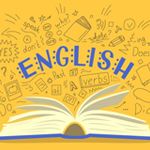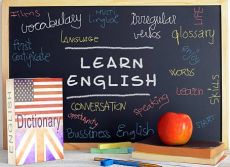430 câu trắc nghiệm Tiếng Anh chuyên ngành Y dược
Chia sẻ hơn 430 câu trắc nghiệm Tiếng Anh chuyên ngành Y dược dành cho các bạn sinh viên Đại học, Cao đẳng chuyên ngành Y khoa có thêm tư liệu học tập, ôn tập chuẩn bị cho kì thi kết thúc học phần sắp diễn ra và từ đó tìm hiểu những kiến thức mới nhất về Y tế. Để việc ôn tập trở nên hiệu quả hơn, các bạn có thể ôn theo từng phần trong bộ câu hỏi này bằng cách trả lời lần lượt các câu hỏi cũng như so sánh đáp và lời giải chi tiết được đưa ra. Sau đó các bạn hãy chọn tạo ra đề ngẫu nhiên để kiểm tra lại kiến thức mình đã ôn tập được nhé!
Chọn hình thức trắc nghiệm (40 câu/30 phút)
Chọn phần
-
Câu 1:
Treatment of goiter is to increase the supply of __________ in the diet:
A. iodine
B. calcium
C. sodium
D. potassium
-
Câu 2:
When the levels of T3 and T4 are excessive, T3 causes ______ on the pituitary and perhaps the hypothalamus to inhibit TRH and TSH secretion:
A. production
B. synthesis
C. feedback
D. replacement
-
Câu 3:
_________ are organs in the female lower abdomen that produce ova and hormones:
A. . placenta
B. ovaries
C. cervix
D. vagina
-
Câu 4:
A/An______ is a measure portion of medicine taken at any one time:
A. Indication
B. dose
C. caution
D. medication
-
Câu 5:
Thyrotropin (or TSH) stimulates the thyroid gland to release:
A. Thyoxine
B. Parathormone
C. Calcitonin
D. Thymosine
-
Câu 6:
Specialized conductive tissue at the base of the wall between the two upper heart chambers is the ____________:
A. Endocardium
B. Atrioventricular (AV) node
C. Sinoatrial (SA) node
D. Visceral pericardium
-
Câu 7:
The bicuspid or mitral valve is located between ………. Of the heart:
A. The right and left atria
B. The left atrium and the left
C. The right and left ventricle
D. The right atrium and the left ventricle
-
Câu 8:
“have you ever felt your heart beating rapidly or irregularly?”. The doctor asks about the symptom of_____:
A. Palpation
B. Palpitation
C. Overactivity
D. Tremor
-
Câu 9:
______ is the condition of hyperinflation of air sacs with destruction of alveolar walls:
A. Emphysema
B. Asthma
C. Diphtheria
D. Croup
-
Câu 10:
Where do the waste products and food that are not absorbed in the small intestine pass?
A. peristalsis
B. stomach
C. large intestine
D. pancreas
-
Câu 11:
Which element in the blood is round and colourless?
A. plasma
B. Platelets
C. red blood cells
D. white blood cells
-
Câu 12:
Which of four chambers of the heart pumps oxygenated blood for systemic circulation?
A. right ventricle
B. left atrium
C. left ventricle
D. aorta
-
Câu 13:
There are two systems in which blood travels in the cardiovascular system. There are the__________ and the __________:
A. Gastrointestinal, cranial
B. Pulmonary, Systemic
C. Vascular, systemic
D. Pulmonary, somatic
-
Câu 14:
Intravenous injection means injection of the drug into the.....:
A. muscle
B. vein
C. body cavity
D. skin
-
Câu 15:
Eggs are producted in the ______________:
A. womb
B. fallopian tubes
C. ovaries
D. vagina
-
Câu 16:
TRH is secreted in the ____________________ :
A. pituitary
B. hypothalamus
C. thyroid
D. parathyroid
-
Câu 17:
Oxygen moves from the lungs into the bloodstream through _____________:
A. nerve fibres
B. a large artery in the heart
C. small blood vessels in the lungs
D. a tube in the lungs called the jugular vein
-
Câu 18:
Is there any _______ between period? – A little white
A. clot
B. hot flushes
C. pain
D. discharge
-
Câu 19:
Blindness may be caused by Vitamin A ___________:
A. Deficiency
B. Increase
C. Breakdown
D. Function
-
Câu 20:
_______ is the liquid portion of blood:
A. Plasma
B. Hemoglobin
C. Protein
D. Hormone
-
Câu 21:
The middle layer of the skin is termed the___________:
A. Subcutaneous layer
B. Epidermis
C. Hypodermis
D. Corium
-
Câu 22:
When the patient has pains in her periods, she has got ______:
A. Prolonged periods
B. Heavy periods
C. Dysmenorrhoea
D. Menorrhagia
-
Câu 23:
The label warned that the drug may impair fine motor skills. It listed the ____ to taking the sedative:
A. Side effect
B. Antidote
C. Contraindication
D. Indication
-
Câu 24:
The dermis is another way to call the ____:
A. subcutaneous
B. epidermis
C. hypodermis
D. corium
-
Câu 25:
The innermost layer of the skin, containing fat tissue is called the ____:
A. corium
B. epidermis
C. dermis
D. subcutaneous layer
-
Câu 26:
_____ administration is accomplished by injection of the drug from a syringe under the skin, into a vein, muscle or body cavity:
A. Rectal
B. Oral
C. Parenteral
D. Sublingual
-
Câu 27:
____ is a medical term which means difficult or painful periods:
A. Dysmenorrhea
B. Menopause
C. Amenorrhea
D. Metrorrhagia
-
Câu 28:
Oxygen-containing protein in red blood cells is ______:
A. Plasma
B. Liquid
C. Platelet
D. Hemoglobin
-
Câu 29:
Monocyte is formed in _____:
A. Bone marrow
B. Liver
C. Lymph tissue
D. Erythrocyte
-
Câu 30:
_____ is an unpleasant sensation from the stomach with a tendency to vomit:
A. Nausea
B. Anorexia
C. Diarrhea
D. Faeces
-
Câu 31:
Calcitonin is a hormone of the _____:
A. Thyroid gland
B. Adrenal cortex
C. Pituitary gland
D. Thymus gland
-
Câu 32:
_____ is used to refer to defecation:
A. Bowel habit
B. Bowel movement
C. Micturition
D. Flatulence
-
Câu 33:
What happens to the windpipe, or trachea, before it reaches the lungs?
A. It branches in two directions
B. It branches in three directions
C. It vibrates and creates sounds
D. It closes up so that no oxygen can escape
-
Câu 34:
A medication that causes blood vessels to narrow and contract is __________:
A. Vasoconstrictor
B. Vasomotor
C. Vasodilator
D. Asodepressor
-
Câu 35:
TRH triggers the _______________of TSH in the pituitary:
A. Replacement
B. production
C. Synthesis
D. Feedback
-
Câu 36:
The ............ connects the ovary and the womb:
A. Uterus
B. Vagina
C. Salpinx
D. Neck of womb
-
Câu 37:
..... are heard when the airways are narrowed:
A. Pleural rubs
B. Crackles
C. Breath sounds
D. Wheezes
-
Câu 38:
That symptoms of the disease return is called ........:
A. Relief
B. Remission
C. Occurrence
D. Replase
-
Câu 39:
Melaena is a sign of _________:
A. Gastric ulcer
B. Coeliac disease
C. Cholera
D. Ulcerative colitis
-
Câu 40:
Which of the following substances leaves blood as it passes through capillaries in organs like the liver or pancreas?
A. Oxygen
B. Carbon Dioxide
C. Starch
D. Urea














